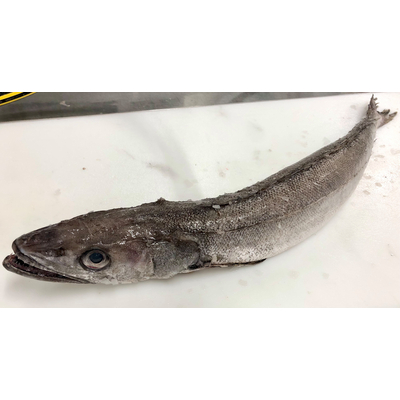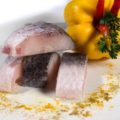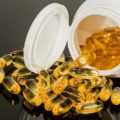Panla is a very popular fish in Nigeria, there are several species of Panla the most common being the white panla Scientifically known as Merluccius merluccius. The English name of panla is European hake fish. The hake fish is also known by many local names as herring hake, cape hake, merluza (Spanish), pescada, pescadinha, nasello, merluzzo (Italian), merlu, merluche (French).
Fish is rich in calcium and phosphorus and a great source of minerals, such as iron, zinc, iodine, magnesium, and potassium. The American Heart Association recommends eating fish at least two times per week as part of a healthy diet.
Health Benefits of Panla Fish
- Panla fish is one of the finest sources of essential fatty acids, protein, minerals and fat-soluble vitamins like vitamin A, E and D.
- It is non-oily, deep water fish, and therefore, low in calories and saturated fats; 100 g holds just 78 calories in comparison to 91 calories in halibut.
- Panla contains lean, white meat that composes good amino-acids profile. 100g fish provides 17.54 g/100 g (31% of RDI). Protein composition is complete in the sense that all essential amino acids in a healthy proportions.
- Panla’s lean meat is a good source of poly-unsaturated fatty acids (PUFA). Studies have shown that eating seafood can decrease the risk of heart attack, stroke, obesity and hypertension. Seafood is low in saturated fat and higher in “heart healthful” polyunsaturated fat, including omega-3 fatty acids. ALSO READ: Health Benefits and Side Effects of Catfish
- Panla contains just 0.079 ppm of mercury in its flesh. US FDA categorizes Panla in the “best choice “section considering mercury levels in its flesh. The recommendation is consumption of 2-3 serving (8-12 ounces) per week for Panla fish.
- Panla is a moderate source of omega-3-eicosapentaenoicacid (EPA), docosapantaenoicacid (DPA) and docosahexaenoic acid (DHA) fatty acids. Research studies suggest that these fatty acids, particularly DHA, play an important role in the development of nervous system, especially in infants and children.
- According to Cornell University and the New York Sea Grant Extension Program. 2012– the fatty acids play crucial role in decreasing blood pressure and heart rate and help improve cardiovascular function. For example, research has shown that omega-3 fatty acids decrease the risk of arrhythmias (abnormal heartbeats) that can lead to sudden death.
- In adults, several large trials have evaluated the effect of fish or fish oils on heart disease. In the “GISSI Prevention Trial, heart attack survivors who took a 1-gram capsule of omega-3 fats every day for three years were less likely to have a repeat heart attack, stroke, or die of sudden death than those who took a placebo”.
- Being deep water, cod-like fish, Panla contains small amounts of vitamin-A in its flesh; Nonetheless, its liver carries good amounts of omega-3 essential fatty acids such as ALA, DHA and DPA to help keep healthy mucosa and skin.
- Panla fillet compose B-complex vitamins such as niacin, pyridoxine (B-6). It is also a good source of vitamin-E, vitamin-B12, thiamin, and riboflavin.
- Further, it is a natural source of rich minerals including iodine, calcium , zinc, potassium, phosphorus, and magnesium. Iodine is an important trace element in human nutrition and is essential for thyroid hormone synthesis.
| See the table below for in -depth analysis of nutrients:
Panla fish , steak, Merluccius products, cut from whole fish, raw, Nutritive value per 100g. (Source: USDA National Nutrient database) |
||
| Principle | Nutrient Value | Percentage of RDA |
| Energy | 78 Kcal | 4% |
| Carbohydrates | 0 g | 0% |
| Protein | 17.54 g | 31% |
| Total Fat | 0.88 g | 4.4% |
| Cholesterol | 20 mg | 10% |
| Dietary Fiber | 0 g | 0% |
| Vitamins | ||
| Vitamin-A | 0 IU | 0% |
| Vitamin-C | 1.1 mg | 2% |
| Electrolytes | ||
| Sodium | 100 mg | 6.5% |
| Minerals | ||
| Calcium | 44 mg | <1% |
| Iron | 0.95 mg | 2% |
Buying
Panla fish are available year round, as a whole, headed & gutted or as fillets in the US markets. Breaded portions, smoked, salted (white and red Panla) also available in the specialty stores as value-added products.
They are best from March till July. Look for bright, firm fish with silvery skin, pink gills and clear eyes. The fish has few bones and these are easy to remove. Avoid buying fillets as they tend to disintegrate during cooking.
At home, store fish and fillets in the refrigerator for 2-3 days. For extended use, scale and gut whole before storing in deep freezer.
Preparation
Panla fish is mild-tasting, even delicately that absorbs surrounding flavors in a dish. Its firm, white fish is similar to cod and has a flaky texture and subtle flavor.
Serve it grilled, poached or baked with strong flavor accompaniments like curry or tomato sauce. Depending on the serve size; smaller fish is headed and gutted and can be used in stuffing. Large fish cut in steaks or filleted. Head side portion holds more flavorful flesh. READ: Health Benefits and Side Effects of Catfish





